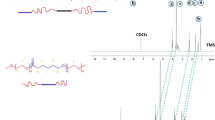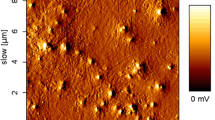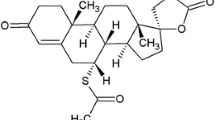Abstract
Two model triblock copolymers composed of hydrophilic (H) polyethylene glycol (PEG) and lypophilic (L) poly(butylene adipate) (PBA) have been synthesized and characterized with quite same molecular weight of each segments and different segment order: PBA-PEG-PBA and mPEG-PBA-mPEG. While LHL micelles adopt a flower-like arrangement with looped PEG on the shell, HLH micelles form a crew-cut particle with stretched hydrated PEG on the shell. The comparative investigation of the pharmaceutical properties of the obtained crewcut and flower-like micellar nanoparticles displayed advantages and disadvantages over each other. In order to exploit the advantages of both systems, the mixing has been used as a strategy. The mixed micelles with “shaggy arrangement” have been produced from the comicelling of LHL and HLH triblocks. They revealed better drug loading, encapsulation efficiency, more controlled release rates, smaller particle sizes and size distributions.











Similar content being viewed by others
Abbreviations
- CMC:
-
Critical micelle concentration
- H:
-
Hydrophile
- L:
-
Lipophile
- PBA:
-
Poly (butylene adipate)
- mPEG:
-
Monomethoxy polyethylene glycol
- PME:
-
Polymer micellation efficiency
- Rh :
-
Radius of Hydration
References
Gaucher G, Dufresne MH, Sant VP, Kang N, Maysinger D, Leroux JC (2005) Block copolymer micelles: preparation, characterization and application in drug delivery. J Contr Release 109:169–188
Wu Y, Mingjun L, Hongxia G (2009) Polymeric micelle composed of PLA and chitosan as a drug carrier. J Polym Res 16:11–18
Liu CC, Chang KY, Wang YJ (2010) A novel biodegradable amphiphilic diblock copolymers based on poly(lactic acid) and hyaluronic acid as biomaterials for drug delivery. J Polym Res 17:459–469
Zhu M-Q, Xiang L, Yang K, Shen L-J, Long F, Fan J-B, Yi H-Q, Xiang J, Aldred MP (2012) Synthesis and characterization of biodegradable amphiphilic triblock copolymers methoxy-poly(ethylene glycol)-b-poly(L-lysine)-b-poly(L-lactic acid). J Polym Res 19:9808
Allen C, Maysinger D, Eisenberg A (1999) Nano-engineering block copolymer aggregates for drug delivery. Colloid Surface B-Biointerfaces 16:3–27
Kataoka K, Harada A, Nagasaki Y (2001) Block copolymer micelles for drug delivery: design, characterization and biological significance. Adv Drug Deliv Rev 47:113–131
Wang T, Jiang M, Wu Y (2010) Nanoparticles composed of PLGA and hyperbranched poly (amine-ester) as a drug carrier. J Polym Res 17:335–345
Wang X-L, Zhai Y-L, Tang D-L, Liu G-Y, Wang Y-Z (2012) Self-assembly, drug-delivery behavior, and cytotoxicity evaluation of amphiphilic chitosan-graft-poly(1,4-dioxan-2-one) copolymers. J Polym Res 19:9946
Ebrahim Attia AB, Ong ZY, Hedrick JL, Lee PP, Ee PLR, Hammond PT et al (2011) Mixed micelles self-assembled from block copolymers for drug delivery. Curr Opin Colloid Interface Sci 16:182–194
Kim S, Shi Y, Kim JY, Park K, Cheng J-X (2009) Overcoming the barriers in micellar drug delivery: loading efficiency, in vivo stability, and micelle—cell interaction. Expet Opin Drug Deliv 7:49–62
Wiradharma N, Zhang Y, Venkataraman S, Hedrick JL, Yang YY (2009) Self-assembled polymer nanostructures for delivery of anticancer therapeutics. Nano Today 4:302–317
Natalya R (2007) Physical stimuli-responsive polymeric micelles for anti-cancer drug delivery. Prog Polym Sci 32:962–990
Gérard R (2003) Micellization of block copolymers. Prog Polym Sci 28:1107–1170
Nguyen A, Marsaud V, Bouclier C, Top S, Vessieres A, Pigeon P et al (2008) Nanoparticles loaded with ferrocenyl tamoxifen derivatives for breast cancer treatment. Int J Pharm 347:128–135
Hans ML, Lowman AM (2002) Biodegradable nanoparticles for drug delivery and targeting. Current Opinion in Solid State & Materials Science 6:319–327
Maiti S, Chatterji PR (2000) Transition from Normal to Flowerlike Micelles†. J Phys Chem B 104:10253–10257
Jeong B, Bae YH, Kim SW (1999) Thermoreversible gelation of PEG-PLGA-PEG triblock copolymer aqueous solutions. Macromolecules 32:7064–7069
Li Z, Ning W, Wang J, Choi A, Lee P-Y, Tyagi P et al (2003) Controlled gene delivery system based on thermosensitive biodegradable hydrogel. Pharm Res 20:884–888
He G, Ma LL, Pan J, Venkatraman S (2007) ABA and BAB type triblock copolymers of PEG and PLA: a comparative study of drug release properties and “stealth” particle characteristics. Int J Pharm 334:48–55
Kasuya K-i, Takagi K-i, Ishiwatari S-i, Yoshida Y, Doi Y (1998) Biodegradabilities of various aliphatic polyesters in natural waters. Polym Degrad Stab 59:327–332
Mu C-F, Balakrishnan P, Cui F-D, Yin Y-M, Lee Y-B, Choi H-G et al (2010) The effects of mixed MPEG-PLA/Pluronic® copolymer micelles on the bioavailability and multidrug resistance of docetaxel. Biomaterials 31:2371–2379
Li L, Tan YB (2008) Preparation and properties of mixed micelles made of Pluronic polymer and PEG-PE. J Colloid Interface Sci 317:326–331
Yoo SI, Sohn B-H, Zin W-C, Jung JC, Park C (2007) Mixtures of diblock copolymer micelles by different mixing protocols. Macromolecules 40:8323–8328
Kim SH, Tan JPK, Nederberg F, Fukushima K, Yang YY, Waymouth RM et al (2008) Mixed micelle formation through stereocomplexation between enantiomeric Poly(lactide) block copolymers. Macromolecules 42:25–29
Wang Y, Yu L, Han L, Sha X, Fang X (2007) Difunctional pluronic copolymer micelles for paclitaxel delivery: synergistic effect of folate-mediated targeting and pluronic-mediated overcoming multidrug resistance in tumor cell lines. Int J Pharm 337:63–73
Yang L, Wu X, Liu F, Duan Y, Li S (2009) Novel biodegradable polylactide/poly(ethylene glycol) micelles prepared by direct dissolution method for controlled delivery of anticancer drugs. Pharm Res 26:2332–2342
Alakhov V, Klinski E, Li S, Pietrzynski G, Venne A, Batrakova E et al (1999) Block copolymer-based formulation of doxorubicin. From cell screen to clinical trials. Colloid Surface B Biointerfaces 16:113–134
Xing N, Chen Y, Mitchell SH, Young CY (2001) Quercetin inhibits the expression and function of the androgen receptor in LNCaP prostate cancer cells. Carcinogenesis 22:409–414
Vauthier C, Bouchemal K (2009) Methods for the preparation and manufacture of polymeric nanoparticles. Pharm Res 26:1025–1058
Fessi H, Puisieux F, Devissaguet JP, Ammoury N, Benita S (1989) Nanocapsule formation by interfacial polymer deposition following solvent displacement. Int J Pharm 55:R1–R4
Bilati U, Allémann E, Doelker E (2005) Development of a nanoprecipitation method intended for the entrapment of hydrophilic drugs into nanoparticles. Eur J Pharm Sci 24:67–75
Van Butsele K, Sibret P, Fustin CA, Gohy JF, Passirani C, Benoit JP et al (2009) Synthesis and pH-dependent micellization of diblock copolymer mixtures. J Colloid Interface Sci 329:235–243
Vangeyte P, Leyh B, Auvray L, Grandjean J, Misselyn-Bauduin AM, Jérôme R (2004) Mixed self-assembly of poly(ethylene oxide)-b-poly(ε-caprolactone) copolymers and sodium dodecyl sulfate in aqueous solution. Langmuir 20:9019–9028
Khoee S, Hassanzadeh S, Goliaie B (2007) Effects of hydrophobic drug-polyesteric core interactions on drug loading and release properties of poly(ethylene glycol)-polyester-poly(ethylene glycol) triblock core-shell nanoparticles. Nanotechnology 18:175602
Khoee S, Rahimi HB (2010) Intermolecular interaction and morphology investigation of drug loaded ABA-triblock copolymers with different hydrophilic/lipophilic ratios. Bioorg Med Chem 18:7283–7290
Li Z, Hillmyer MA, Lodge TP (2005) Control of structure in multicompartment micelles by blending μ-ABC star terpolymers with AB diblock copolymers. Macromolecules 39:765–771
Acknowledgments
The authors wish to thank Patrick Stals at Chemistry and Chemical Engineering Faculty, Technology University of Eindhoven for obtaining AFM micrographs. The authors also would like to thank Mr. Hashemi (Laboratory of Electron Microscopy of University College of Science, University of Tehran) for obtaining SEM micrographs.
Author information
Authors and Affiliations
Corresponding author
Electronic supplementary material
Below is the link to the electronic supplementary material.
ESM 1
(DOC 346 KB)
Rights and permissions
About this article
Cite this article
Hassanzadeh, S., Khoee, S., Mahdavi, M. et al. Crew cut, flower-like and mixed-shaggy micelles prepared from HLH and LHL triblocks as carriers: a comparative study of encapsulation, stability and release properties. J Polym Res 19, 9978 (2012). https://doi.org/10.1007/s10965-012-9978-2
Received:
Accepted:
Published:
DOI: https://doi.org/10.1007/s10965-012-9978-2




